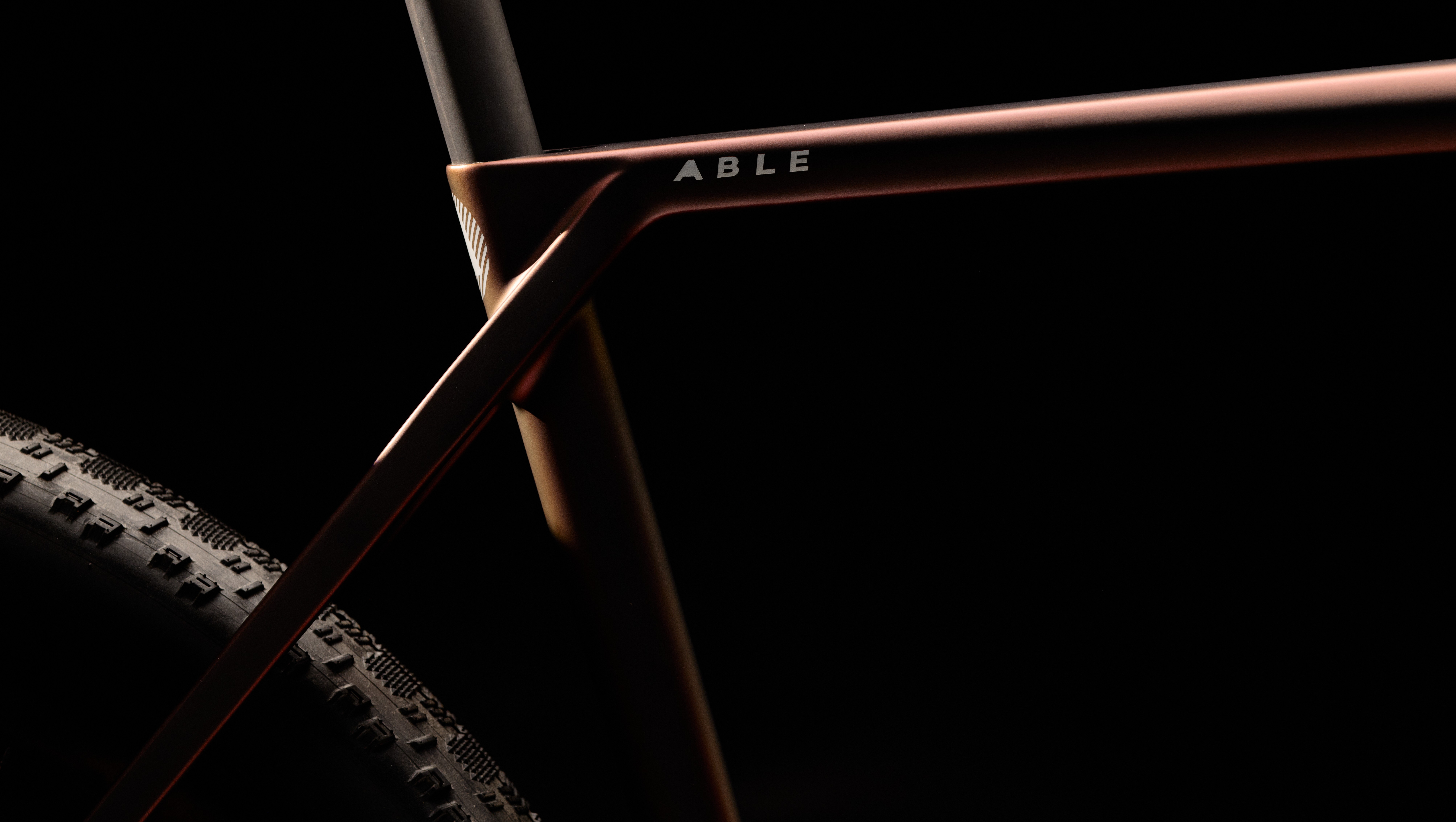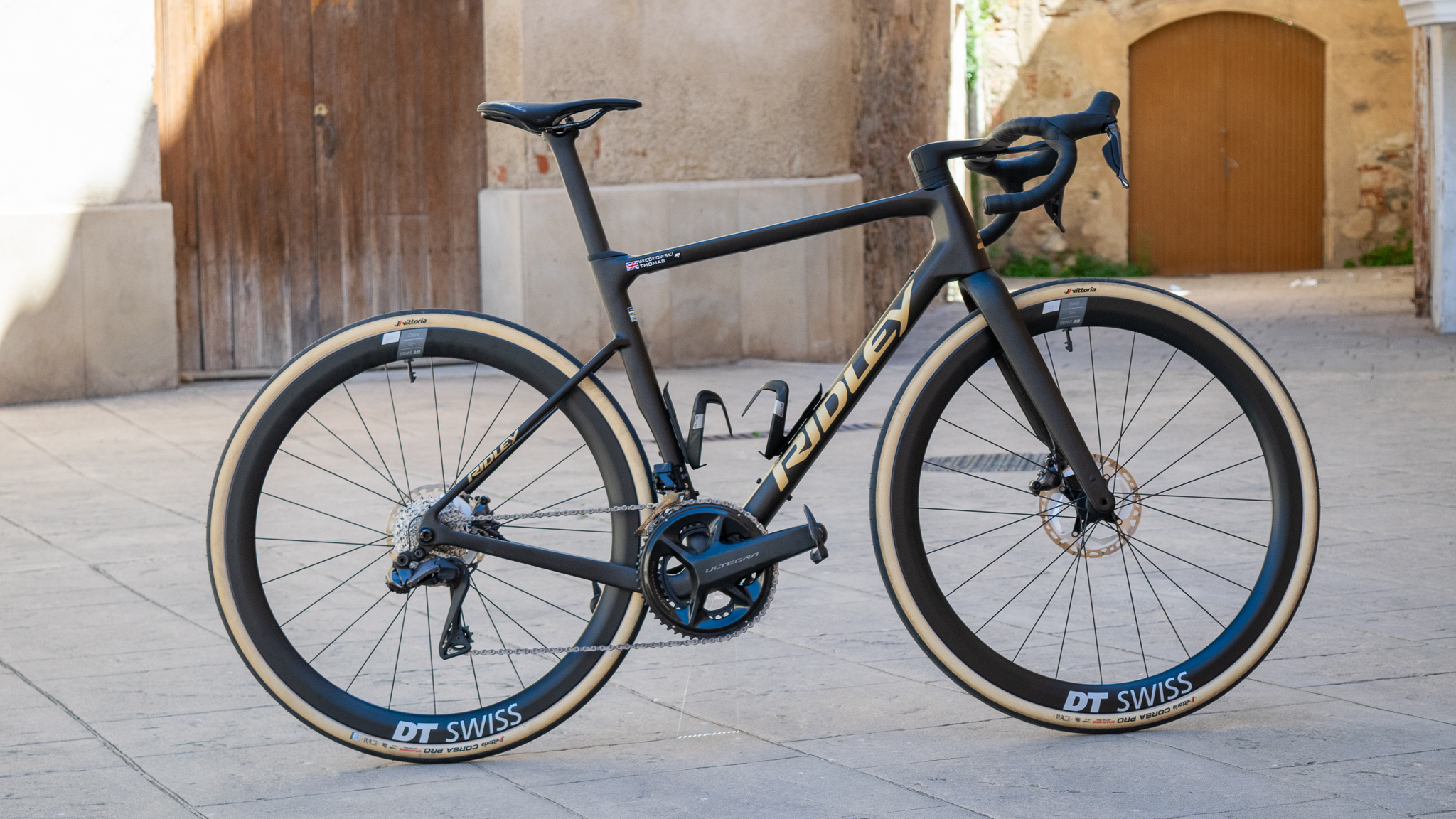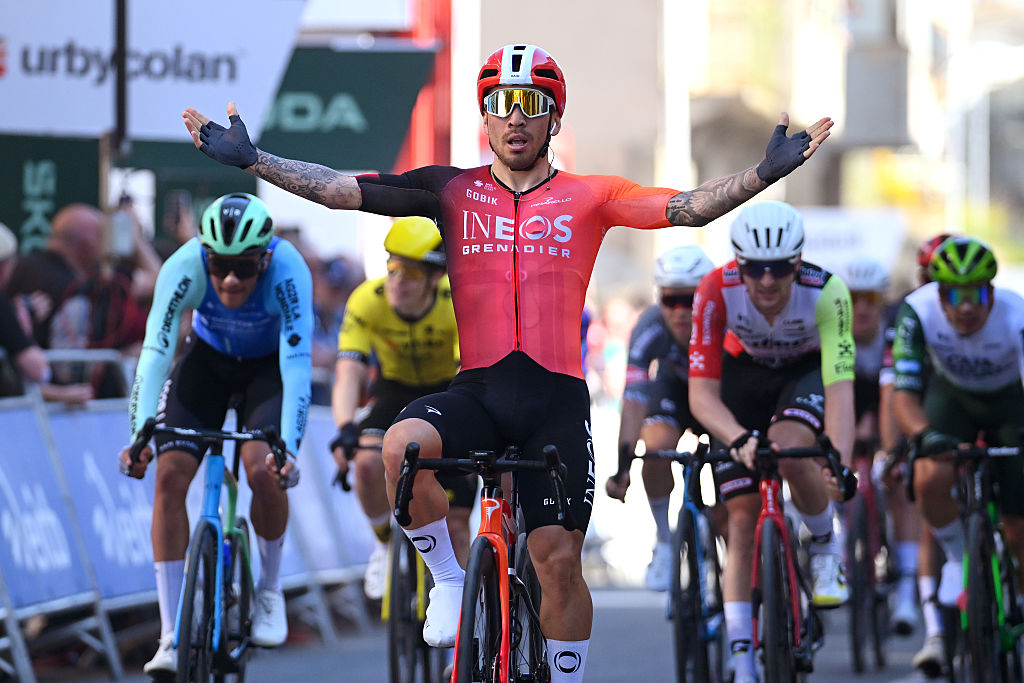Best heart rate monitors of 2025: Never miss a beat, on and off the bike
The best heart rate monitors will track your heart rate comfortably, consistently and accurately
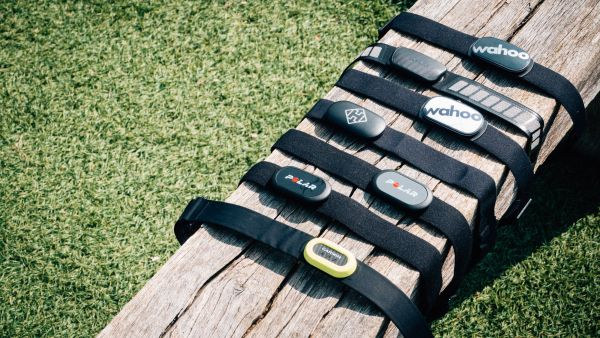
When it comes to exercising, your heart rate is the gold-standard metric to uncover how hard you're pushing. It tells you whether you're working aerobically or anaerobically, how your body is reacting to the effort, when you've recovered ready to go again, and much more.
But the best heart rate monitors aren't all created equal. For cyclists, the most popular are chest strap heart rate monitors, which, at their most basic, need to capture your beats per minute (BPM) and transmit it via Bluetooth or ANT+ to your bike computer, smartwatch or smartphone to be viewed in real-time and recorded for later analysis.
There are forearm-based heart rate monitors, wrist-based heart rate monitors, smartwatches, fitness trackers and even headphones that can track your BPM too, but generally speaking, chest straps are the most accurate.
They use electrodes against your skin to monitor the electrical activity, whereas most other heart rate monitors are 'optical', meaning they send a ray of light into your skin and measure the colour change as blood passes by with each beat.
Here at Cyclingnews, we've tested dozens of heart rate monitors over the past three years, including chest straps, smartwatches, fitness trackers, and more.
This guide will outline the ones that performed best in our tests and impressed us the most. That includes the ones that offered the most consistently accurate results, the best battery life, the ones that did the basics really well for a great price, the ones that offered clever extra features, the most comfortable and more.
Best heart rate monitors: Quick list
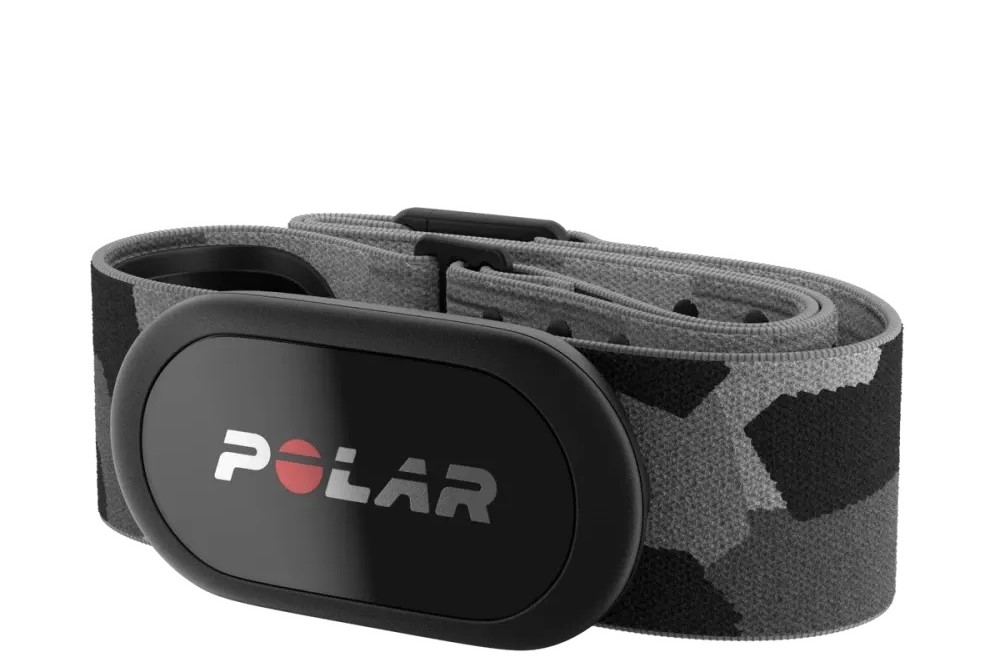
A third electrode and silicone grippers make for accurate readings and a secure, comfortable fit. The Polar H10 can connect to multiple devices and is easy to adjust too.
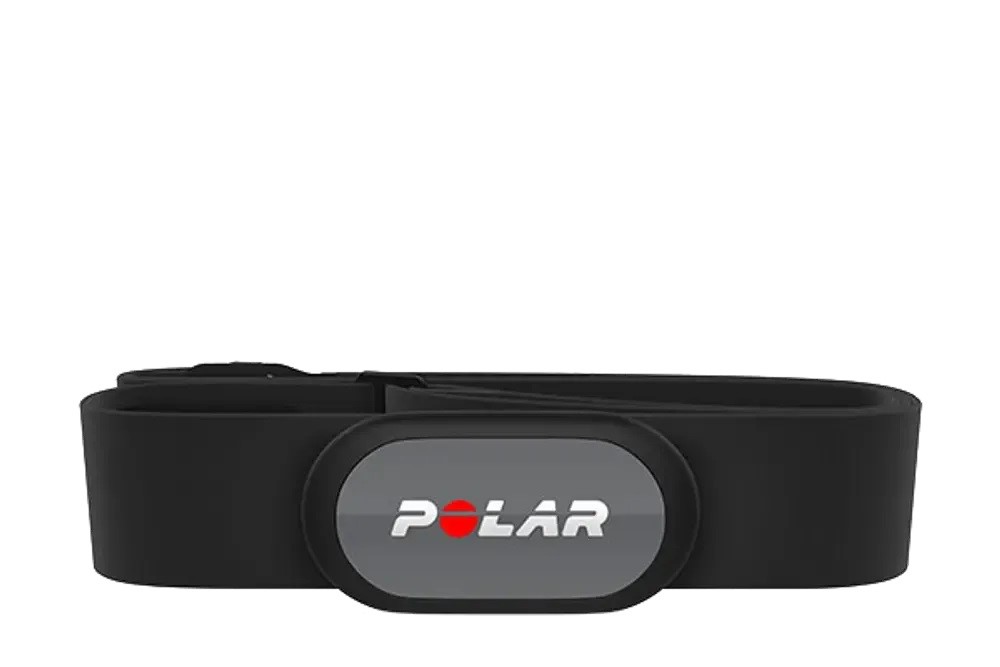
The Polar H9 is accurate and consistent. It's not the cheapest, but it's more comfortable, easier to adjust, and the connectivity has been bulletproof.
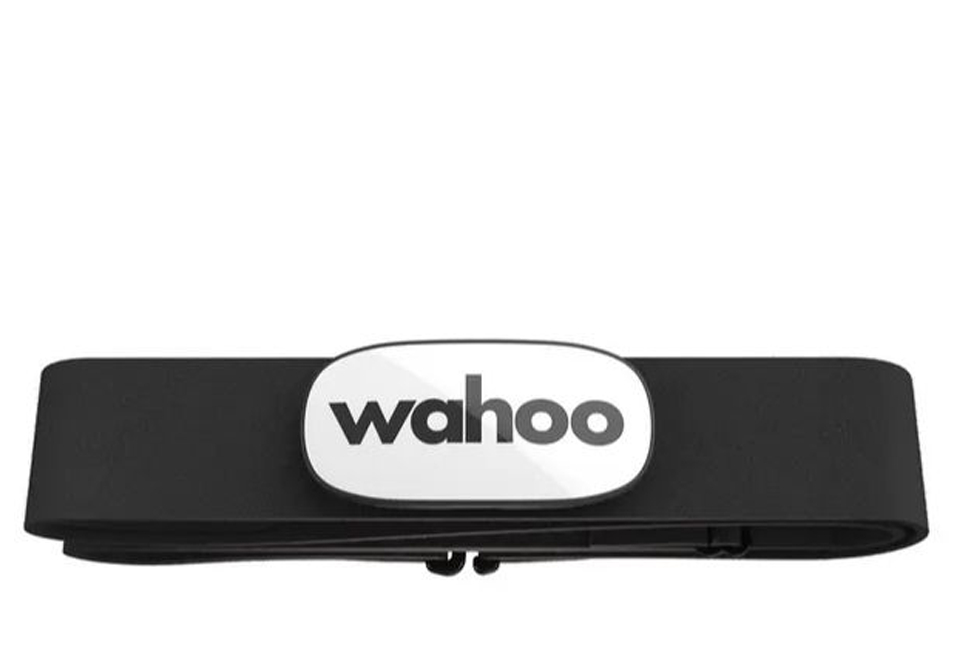
The Trackr is Wahoo's latest heart rate monitor moves from a coin cell to a built-in rechargeable battery. Heart rate accuracy has been improved and the new strap design and sealing boosts durability too.
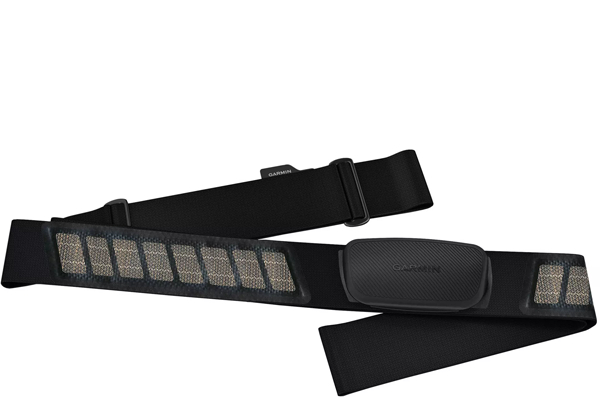
The Garmin HRM Dual boasts a huge battery life, it can measure Heart Rate Variability, and the pod's snap-on buttons are shielded from the body, so avoid corrosion.
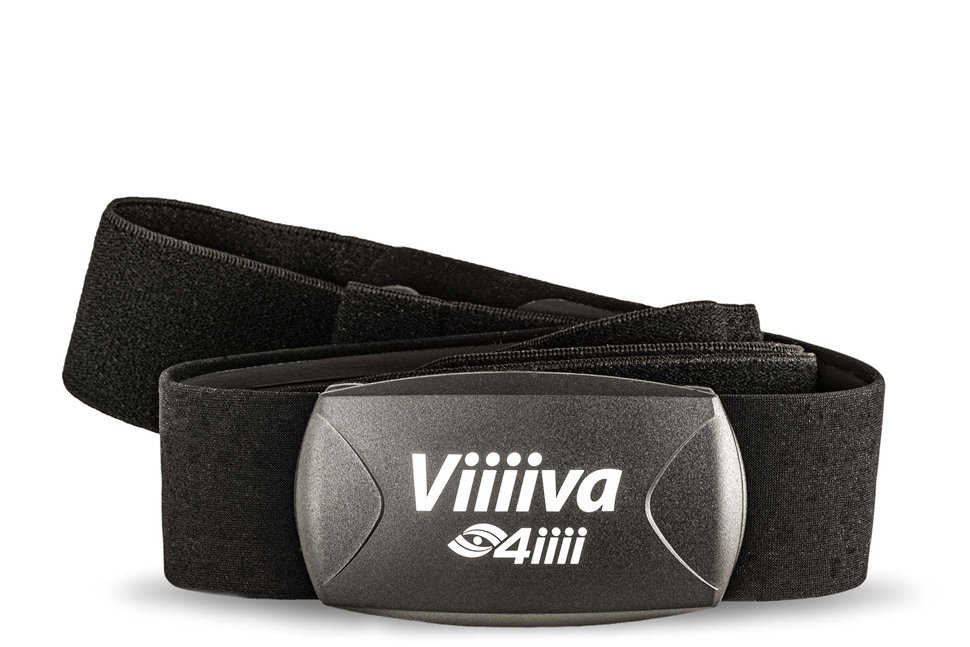
The 4iiii Viiiiva can be used to 'bridge' smart trainer connections to your devices, freeing up a Bluetooth channel on devices that have a limit.
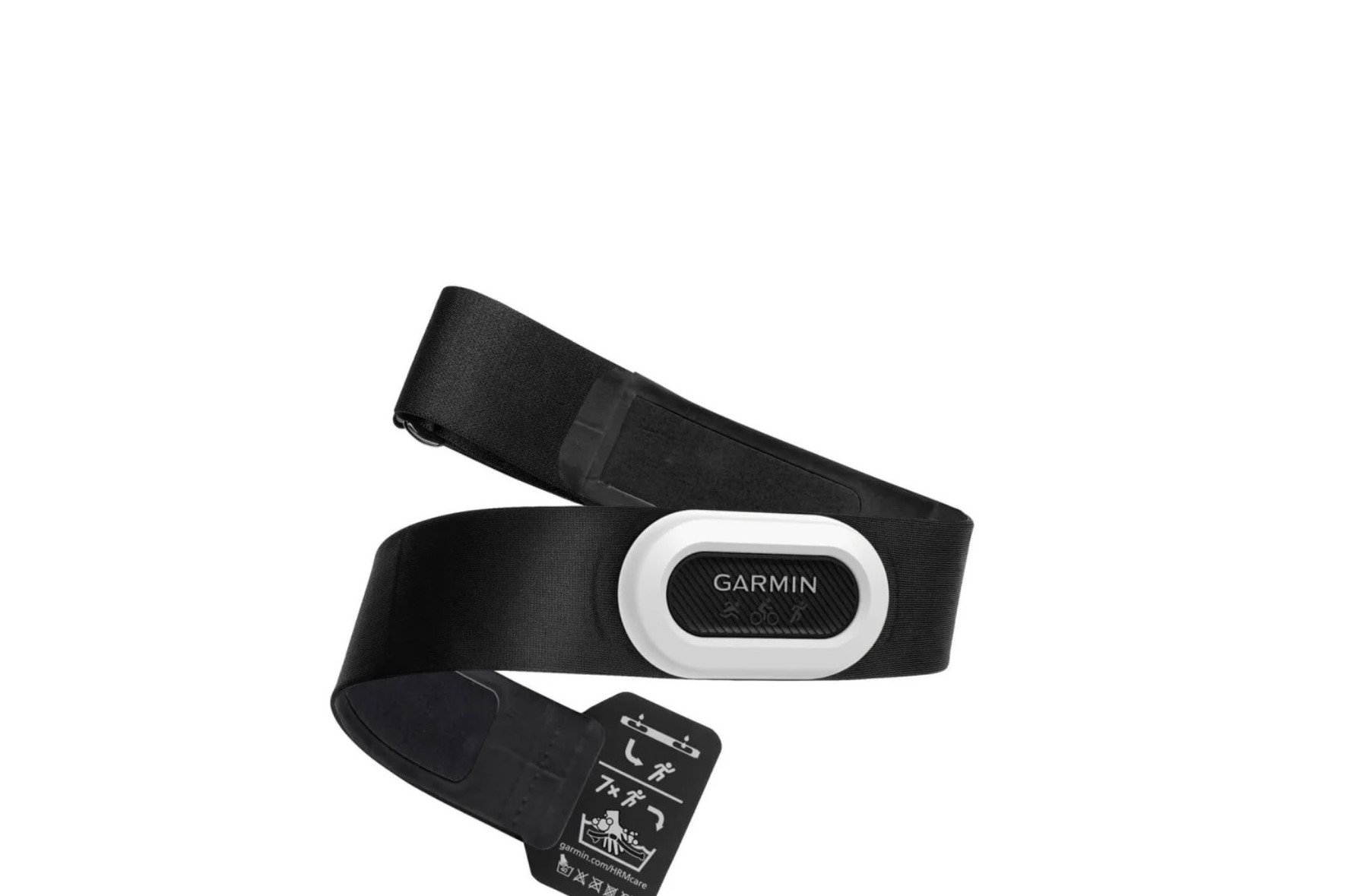
The feature-rich HRM Pro Plus has onboard memory and accelerometers to capture advanced running metrics. It's easy to adjust and comfortable too.

Heart rate has been a fundamental aspect of my training for racing, and over the years, I have used countless heart rate monitors. When evaluating these devices, I prioritize accuracy and usability, they need to provide valuable training data and be compatible with a variety of training tools, ranging from GPS computers to indoor smart trainers.
Recent updates
Last updated on 17th of March 2025
For the latest update, we added in more testing analysis on all products, as well as second opinions on HRM Pro Plus, HRM Dual and Polar H10. The smartwatch option was replaced to reflect our pick in the best cycling watch guide. Also added in an also-consider section, with the Garmin HRM-Fit, Wahoo Tickr Fit and Coros Heart Rate Monitor.
Best heart rate monitors available today
Best heart rate monitor for cycling



Specifications
Reasons to buy
Reasons to avoid
✅ You want the most comfortable fit: Two sizes of chest strap and silicone grippers ensure a close and secure fit.
✅ You want the most accurate data: The combination of excellent fit and the third electrode offers consistently accurate readings.
❌ You want the best value: While the H10 offers excellent performance, the H10 is twice the price of the H9 which shares many of the core features.
❌ You want rechargeable: While the 400-hour battery is great, the Wahoo Trackr's rechargeable battery will never need to be replaced, and will be better for our planet.
Polar claims the H10 is the most accurate on the market - accurate to +/- one millisecond - thanks to a third electrode and silicone grippers to keep it in place. In over two years of testing, I haven't had a single issue so cannot refute those claims, and our expert reviewer had no complaints either. With that said, given most other chest straps here have performed similarly well, I wouldn't buy the H10 for that reason alone.
The reason I would buy it is the super-simple adjustment and extremely comfortable, secure fit. The added bonus of silicone grippers is that you can run it looser than usual without it slipping, and while I don't personally suffer much from chest strap discomfort, I know it's an issue that plagues a few. Swapping to an optical sensor such as a smartwatch is one option, but the downside to that is a reduction in the accuracy of your data, which is common with optical sensors.
Comfort aside, the H10 is entirely waterproof, can be worn while swimming and can also record your heart rate variability — though you'll need to use it in combination with one of the brand's smartwatches to take advantage.
It also offers on-device storage, albeit with memory space for just one training session. Otherwise, it can connect to two concurrent devices with Bluetooth, and it uses a CR2025 (2.5mm thick) battery, although some may prefer a rechargeable unit like the Wahoo Trackr at this pricepoint.
Read our full Polar H10 heart rate monitor review here.
Best value heart rate monitor
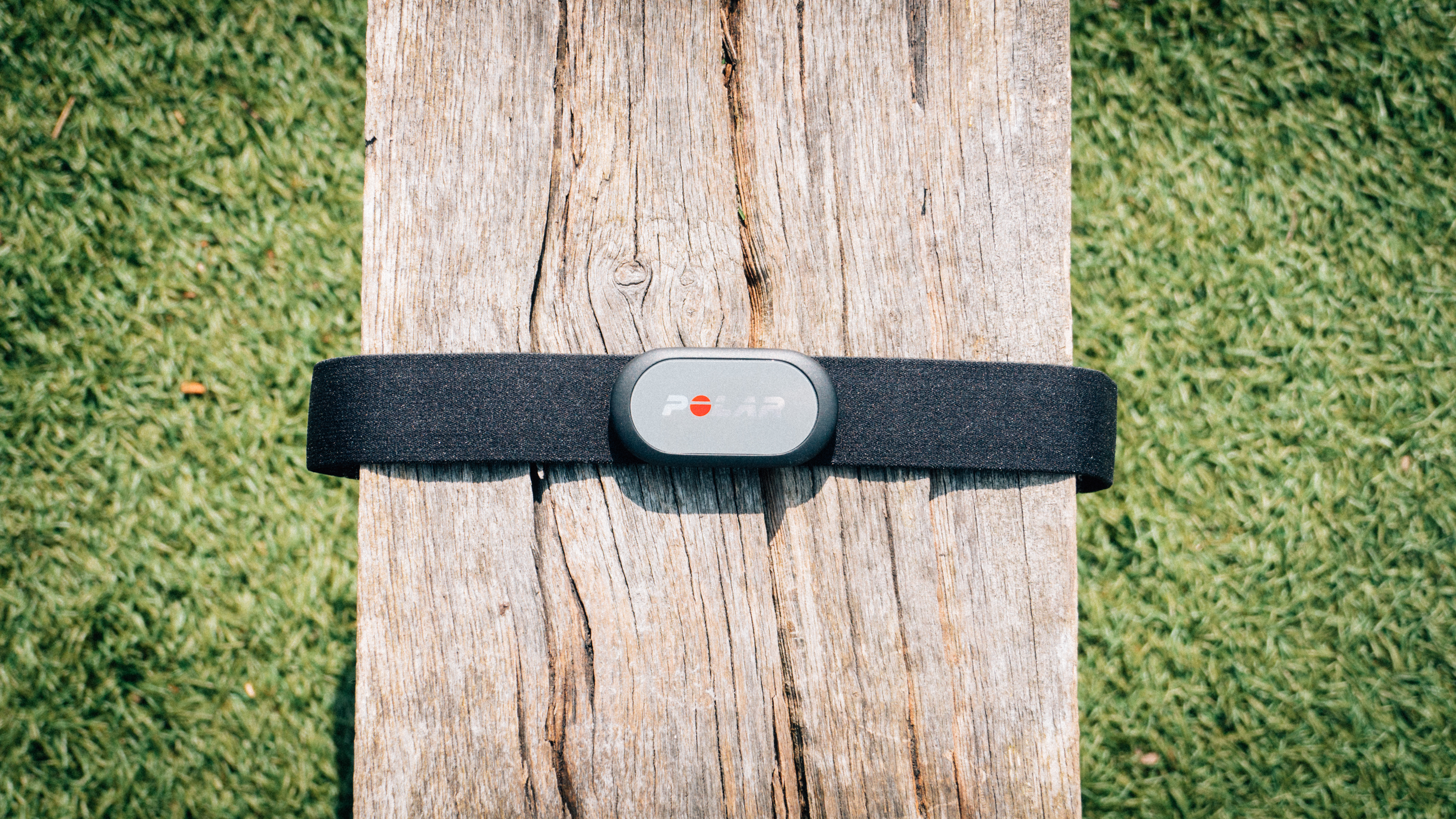
2. Polar H9
Specifications
Reasons to buy
Reasons to avoid
✅ You want an affordable entry into heart rate recording: The H9 offers excellent performance, it also happens to be the most affordable option in our guide.
✅ You want a comfortable fitting heart rate monitor: There are two sizes of elasticated chest strap to choose from, its also machine washable to keep it fresh.
❌ You want advanced features: The H9 doesn't feature HRV recording, GPS, internal storage and running or swimming features.
The Polar H9 doesn't come with any added bells or whistles like onboard memory or accelerometers and there are heart rate monitors with better battery life. Still, the Polar H9 is my favourite heart rate monitor for 'basic function', ie monitoring my heart rate while cycling or running, and the reasons are as follows:
Firstly, my testing has shown the Polar H9 provides reliable, accurate and consistent data whether testing outdoors or indoors. Secondly, while the Garmin HRM Dual is equally accurate, it is a little more expensive again. Thirdly, it's a darn sight easier to adjust the strap on the H9 than on the HRM Dual, and finally, when it comes time to change the battery, the H9 can be done in seconds (just prize away the flap with a flathead screwdriver or similarly-shaped utensil) while the HRM Dual requires a tiny screwdriver to remove four small screws.
To cap it off, it's comfortable and stays secure, so unless you're specifically chasing a truly budget price, a huge battery, or need the added features, this is the best heart rate monitor for you.
Best rechargeable heart rate monitor



3. Wahoo Trackr
Specifications
Reasons to buy
Reasons to avoid
✅ You want a rechargeable battery: Easy charging gives the Trackr 100 hours of battery and saves you from rummaging through the drawers for coin batteries before a ride.
✅ You want to ride in the rain: Removing the battery door should mean the IPX7 sealing isn't damaged when changing the battery. The strap has also been updated and should now be less susceptible to corrosion.
❌ You want a longer battery life: 100 hours is a long time, that said it's nothing compared to the likes of Garmin's HRM Dual which has a claimed battery life of up to 3.5 years.
Wahoo replaced its Tickr and Tickr X range with the latest Trackr heart rate monitor. The new Trackr heart rate pod may look similar to the outgoing models, however, Wahoo has made several updates including a new strap, HRV recording and replacing the venerable coin battery with a rechargeable battery.
While the Trackr takes a hit in battery life compared to coin-powered heart rate monitors, it still features 100 hours of battery life. No longer do you need to keep a stash of coin cell batteries ready for when the battery runs out, instead the Trackr charges using a magnetic charger that connects to the underside of the pod. The IPX7 waterproofing should also be more reliable now as the Trackr no longer needs to be opened up to change the battery which could in turn damage the sealing over time.
Wahoo Tickr straps of the past didn't have the best track record for durability but it looks as though Wahoo has rectified this with the new Trackr. Instead of using the connector points to mount the pod to the strap which I found led to corrosion issues, the Trackr pod is now mounted in the centre of the strap and we expect this to improve accuracy and longevity.
Adjustment of the strap is a fairly straightforward affair, too, but it does require both hands. It holds pretty well though, so should be a one-time job.
For ease of use, the Trackr can simultaneously connect to three devices, which is particularly useful for indoor cycling, as it enables you to control your headwind fan whilst riding on Zwift via your laptop, or track your heart rate via a cycling computer and a phone at the same time.
Best heart rate monitor for battery life



Specifications
Reasons to buy
Reasons to avoid
✅ You want the longest battery life: Garmin claims that the HRM Dual has a massive 3.5-year battery life (assuming an hour per day on average), perfect if you're a forgetful charger.
❌ You want an easily adjustable strap: The Garmin strap has a three-part adjustment system that is fiddly to get the fit right.
The HRM Dual is Garmin's answer to budget heart rate tracking, but its retail price is still more expensive than Polar's H9.
With that said, it can often be found discounted, which increases its appeal. Where it stands out is with its claimed 3.5-year battery life (assuming an hour per day on average) and the ability to monitor heart rate variability (when paired with an appropriate app).
Beyond that, the HRM Dual is a reasonably basic heart rate monitor, so it doesn't come with the bells and whistles of onboard memory and swim/run dynamics. Its construction also leaves a little to be desired, as the three-part adjustment system is unnecessarily complex to use. This is frustrating because Garmin clearly knows how to do it well, as the more expensive HRM Pro is by far the easiest to adjust on this list.
Furthermore, it's a good job the battery life is so good because when it comes to replacing the CR2032 inside, there are four tiny screws which are fiddly and easy to damage. And that assumes you have a screwdriver small enough in the first place since it doesn't come with one.
Unless you're specifically after huge battery life, then in my opinion, the Polar H9 is a better choice at their respective recommended retail prices. I'd buy it at a discount though, and given that's a common occurrence, I've included it in the list.
Read our full Garmin HRM Dual heart rate monitor review here.
Best heart rate monitor for Zwift
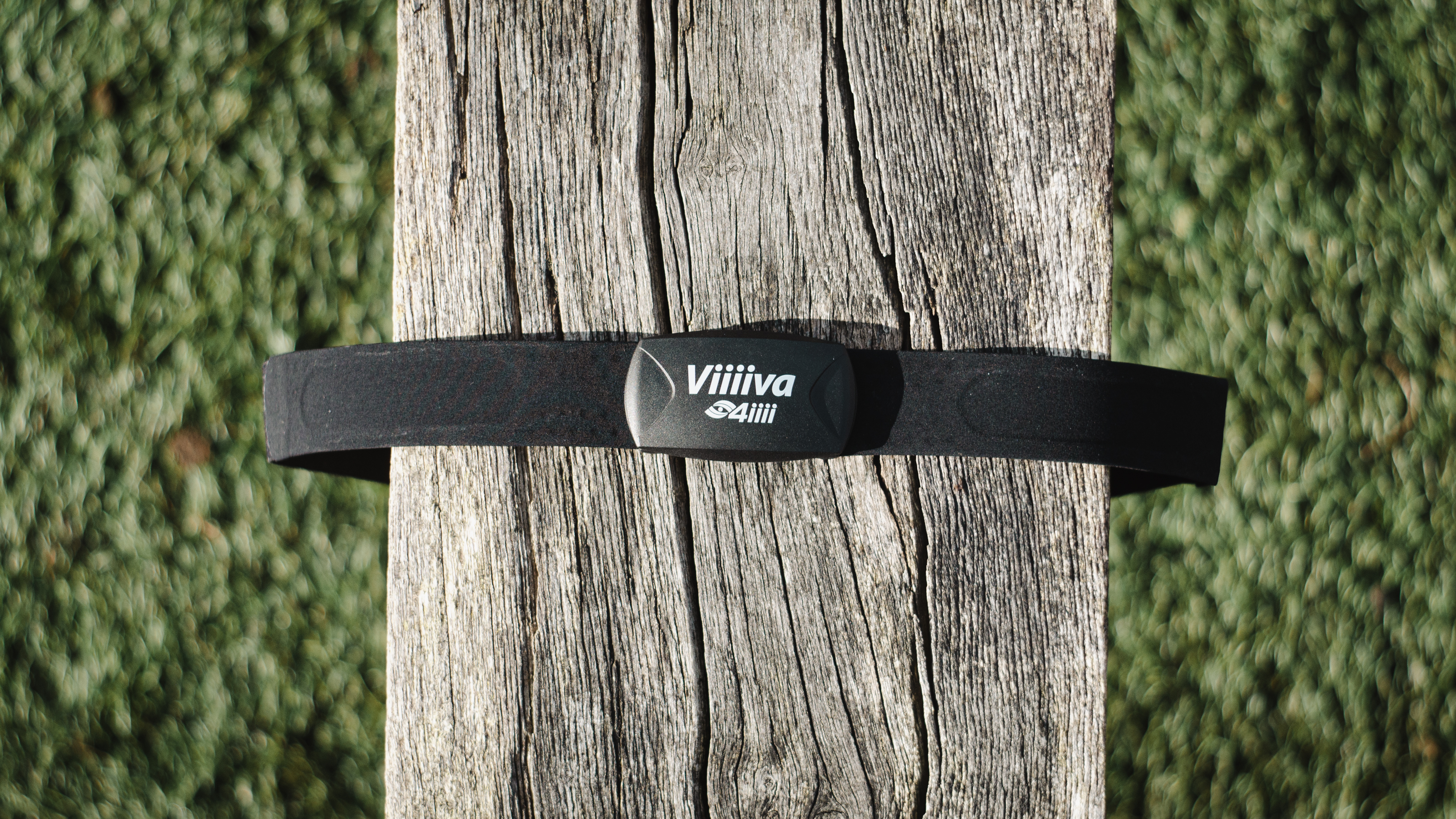
5. 4iiii Viiiiva
Specifications
Reasons to buy
Reasons to avoid
✅ You want to optimise your device connections: Connecting multiple devices to the Viiiiva and then transmitting the combined data via ANT+ is more reliable.
✅ You want a backup of your ride data: 65 hours of internal storage ensures that if you suffer a corrupt .fit file you will be able to recover your data.
❌ You want a long battery life: The Viiiiva has 160 hours battery life which is considerably less than most other chest strap options such as Polar which has 400 hours.
The 4iiii Viiiiva is soon to be discontinued, but as long as it's still available it is my pick as the best heart rate monitor for Zwift for a couple of reasons. The first of those is its ability to act as an ANT+ to Bluetooth bridge. Most smart trainers, power meters and heart rate monitors these days can work with Bluetooth, but too many connections can cause dropouts, and some devices such as Apple TVs and cheaper laptops have a limit on the number they can work with at one time. Running the smart trainer and power meter via ANT+ to your heart rate monitor, and then transmitting all three data streams via Bluetooth to your laptop frees up valuable Bluetooth channels so you can listen to music through your headphones, or use your wireless keyboard to talk to your fellow Zwifters!
The second reason is that it also stores up to 65 hours of your ride data, so that if your file corrupts, you can recover it. Nobody likes to lose their data, but if you race on Zwift in races where dual recording is required, it could save you bragging rights or even prize money.
Beyond those two key USPs, the Viiiiva is a decent all-rounder too. I've not had it long enough to get through 160 hours of riding, but reassuringly I'm still on the first battery. I've not seen a single power dropout yet, both when connected to an Apple Watch, an iPhone, a bike computer, TrainerRoad and Zwift.
Best heart rate monitor for running



Specifications
Reasons to buy
Reasons to avoid
✅ You want to advanced multi-sport features: Onboard storage stores heart rate data during swimming and captures running dynamics if used alongside a compatible Garmin watch.
✅ You want a easy to adjust strap: A simple sliding adjuster can be adjusted with one hand and stays put during activities, requiring no further adjustments.
❌ You want to easly wash the strap: The strap is not machine washable as Garmin has intigrated the HRM Pro Plus into the strap. It's still washable, it just needs to be done by hand.
The HRM Pro Plus is the best heart rate monitor in Garmin's range, with both ANT+ and (unlike the brand's HRM-Run or Swim) Bluetooth compatibility.
It's the highest-priced chest strap on this list, but it does come with a long list of added features. Whether you actually need them is a question you'll need to ask yourself.
It features onboard memory, and will automatically measure your heart rate data and then push it to your device when you next connect it to Garmin Connect. For cyclists, it'll easily pair with your Zwift device or any brand of cycling computer. And for dedicated runners, it can also track detailed running metrics such as ground contact time, stride length and more. These are seriously impressive metrics, but you do need one of Garmin's smartwatches to take advantage of some, you can't access them all via a smartphone.
The strap is by far the easiest on this list to adjust; it's a one-handed affair and it doesn't self-loosen over time, it also stays put without being worn too tightly.
Like many others here, the battery is a CR2032 coin cell and Garmin claims it will last around 12 months, with an hour's use per day, which equates to 365 hours of training time between changes. My personal testing saw a lifespan of around half this, but integrating the heart rate monitor into my daily training regime alongside all the others in this list is more anecdote than science.
Thankfully, the battery change on the HRM Pro Plus is a much more straightforward affair than it was on the older HRM Pro.
The pod itself cannot be removed from the strap, which means washing needs to be done by hand, rather than through the washing machine, and Garmin suggests you do that after seven workouts or after every pool swim. For those planning on swimming a lot, the HRM-Swim does come with a wider strap, which helps it stay put better, especially useful for those not wearing a wetsuit, swimsuit or triathlon vest over the top.
Read our full Garmin HRM Pro Plus heart rate monitor review here.
Best heart rate monitor for 24-hour tracking
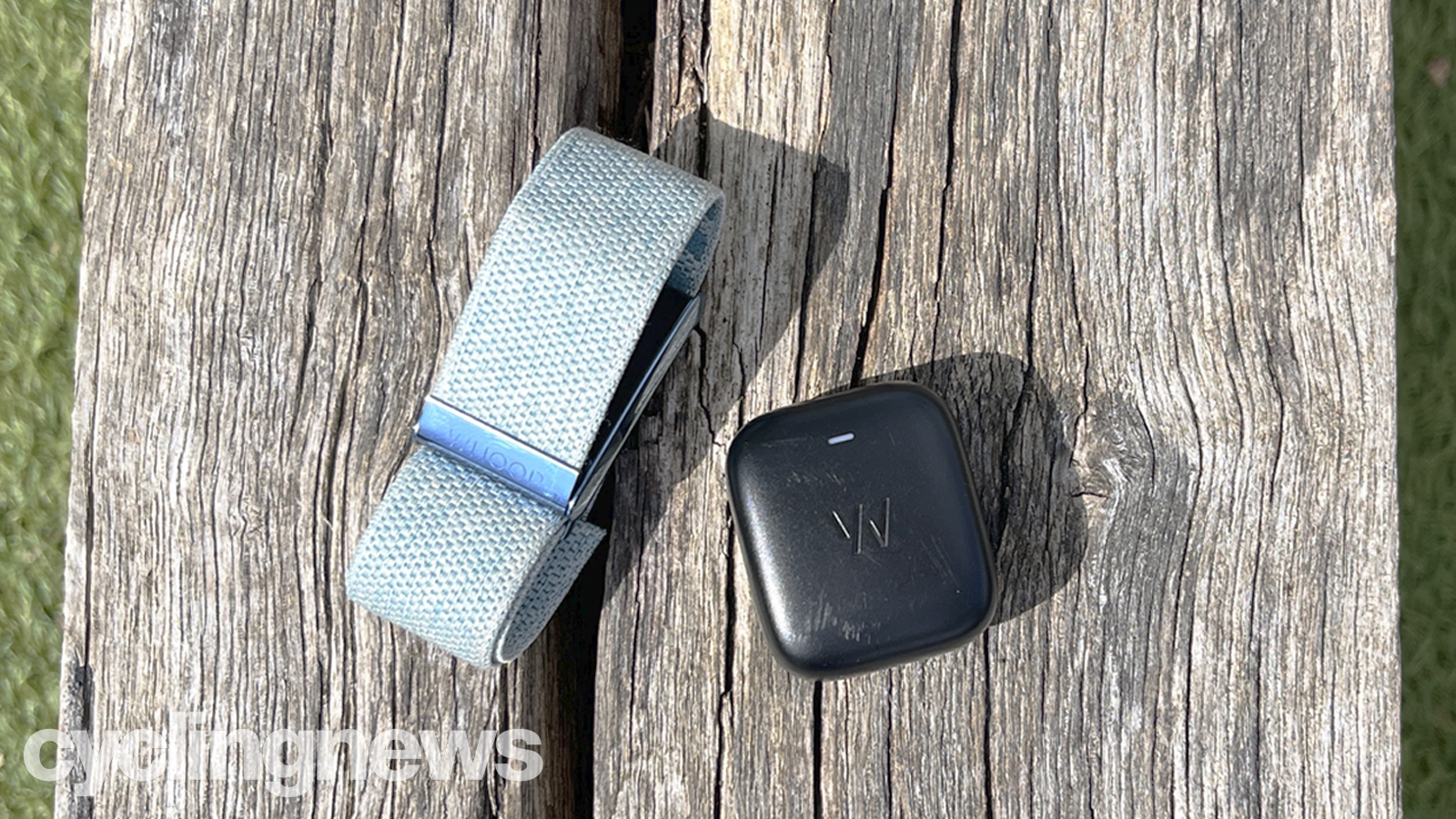
Specifications
Reasons to buy
Reasons to avoid
✅ You want to track a wide range of metrics 24/7: Whoop tracks everything from heart rate variable (HRV), sleep, strain, and recovery to optimise training and your life around it.
✅ You want easy to understand metrics: The Whoop app packages all the data it records into an easy to understand and trackable format. Whoop can also automatically sync with other training and health apps.
❌ You don't want a monthly subscription: Whoop offers a huge amount of data and insight to take training to the next level, this comes at the cost of a monthly subscription though.
❌ You want accurate heart rate data: Optical heart rate monitors aren't as accurate as electrical detection used by chest straps.
Buying a Whoop 4.0 requires a monthly subscription that not only gives you the wrist strap itself but access to Whoop's extensive heart rate, respiratory rate, blood oxygen and skin-temperature monitoring app. Whoop's premise is built primarily on heart rate variability (HRV), which is basically the variation in time between each of your heart's beats, measured in milliseconds.
The theory is that a higher HRV (when compared to your individual average) means you are fresher, or more recovered. Wear the Whoop 24/7 and it will collect this data alongside your activities to monitor your strain vs recovery (incl. sleep) and provide guidance on how to improve. It's a seriously deep data dive that most people won't need, but for committed athletes looking to optimise their life around training, it could be the tool to unlock the next level of performance.
It's clever in that the charger is a portable slide-on battery pack that you wear, and the device itself is waterproof enough to be worn in the pool, the shower, or the sea so you'll never lose a moment's data. However, bear in mind charging is necessary every three to four days. Using the app, you can even relay the heart rate to third-party devices such as cycling computers, should you want to avoid using a chest strap at the same time, and when your Whoop detects an activity, it will not only automatically figure out if it was a ride, a run, mountain biking or more (which it's really good at) and it can then be synced to Strava, Training Peaks or Apple Health.
You need to ensure it's tight against the skin for consistent results, but in my testing, I've found it to be accurate enough for its purpose of tracking overall fatigue and freshness, even if the beat-by-beat measurement might be less perfect than chest straps during exercise.
Read our full Whoop 4.0 review here.
Best heart rate monitor watch

8. Garmin Forerunner 965
Specifications
Reasons to buy
Reasons to avoid
✅ You want to do more than just data recording: The Forerunner series can record activities, track day-to-day health, alongside navigation and has a load of other connected features including phone notifications, contactless payments and Spotify controls.
✅ You want to track all your metrics: All your data is fed into the Garmin Connect app allowing you to easily track how your training and health in one place.
❌ You only need heart rate: This is a premium watch packed with features and all this tech demands a high price. For those looking for less features or just heart rate would be better with a chest heart rate strap or a lower-spec Garmin watch.
❌ You want the most accurate data: Optical heart rate monitors require close contact with the skin, requiring a tight fit from the watch.
In fairness, for the pure heart rate monitor functionality, most modern smartwatches will do what you need. But if you're looking for one of the best smartwatches, then the Garmin Forerunner 965 has been crowned the best cycling watch by our experts, and so I've included it here as the leftfield option.
It offers every function you need from an everyday smartwatch, such as the time, alarms, notifications, contactless pay, and on-device Spotify music, alongside GPS tracking and workout metrics such as Vo2 Max, pace, stride length and so on. You can even pair it with the HRM Pro Plus above for super thorough running metrics, but its an expensive pairing that only the most committed athletes will benefit from.
Importantly, I personally prefer the Apple smartwatches over the Garmin ecosystem, and if like me you're not all that interested in checking your vertical oscillation when running, and (importantly) you own an iPhone, then the Apple range might be your pick too. However, the battery life on the Garmin watches far exceed Apple. The Garmin also works equally well no matter your choice of phone, while the Apple Watches are, naturally, slightly more integrated with iPhones.
Regardless of your choice, the main thing they both offer is the ability and convenience to wear them 24-7. They'll give you a heads-up if your heart rate starts beating an irregular rhythm, and they'll be on hand - almost literally - whenever you start your ride.
Also consider
While the list above is a pretty exhaustive list of the heart rate monitors we'd be happy to recommend for Cyclingnews readers to buy, there are a few others we've tested recently that we like, but not quite enough to make it into the guide.
The first of these is the Garmin HRM-Fit. Designed for women, it is made to clip onto the underband of a sports bra, instead of wrapping around the torso. It's an excellent choice for those looking to avoid potential chafing or rubbing which can come when using a standard chest strap, but at £139.99/$149.99, the price is too steep. It has similar features to the HRM-Pro Plus, but cannot be worn swimming, and it seems unfair to ask women to pay more for less tech.
The next is the Wahoo Tickr Fit. This is a fore-arm based optical heart rate sensor that's a good option for those who don't want to wear a full chest strap. If you have a smartwatch with a heart rate monitor built in, then that's probably the optimal solution, but if you find chest straps uncomfortable or restrictive, then this would be our pick. Another option here though is the simply-titled Coros Heart Rate Monitor. This too is worn on the forearm, costs the same and offers very similar functionality. The Coros promises a longer life between charges, while the Tickr Fit boasts ANT+ connectivity and a spare strap.
How to choose a heart rate monitor
What's the difference between ECG and optical heart rate sensors?
Electrical impulses or beams of light? Which one is best for you?
Since their inception in the 1970s, heart rate monitors have relied on measuring the electrical impulses created by the muscles in your heart as it beats.
It’s similar to what happens when you get an echocardiogram (ECG) at the hospital, only with two or three sensors instead of the twelve commonly used for medical examinations. The electrical sensors measure a small electrical output, and the control unit relays this information to your device of choice (or stores the information for later analysis).
Recently, optical sensors have become more common, especially in multi-sport offerings. These work by shining a light into your skin and measuring the variance in blood flow. While both systems rely on physical contact to gather their readings, optical sensors tend to be used in arm- or wrist-based systems where the variance can be seen.
One problem with this is that a smartwatch is rarely worn as tightly as an elasticated chest strap and as such optical systems tend to be more prone to issues over rough terrain or when running, as bumps can briefly break the all-important contact between skin and sensor.
In simple terms, the best thing for measuring your heart rate will almost always be a chest strap, but if you’re curious about general trends and day-to-day heart health too, a wrist-based optical system will likely be more up your street for its comfort, convenience, and the onboard computer that will process the data rather than relying on being paired to a phone or bike computer.
If you want to run a hybrid system, smartwatches will often have the ability to monitor your heart rate independently using the optical sensor on the back, as well as pair with a dedicated HRM strap for more accurate in-sport measurements.
If you’re still in two minds we have a dedicated guide to wrist vs chest straps, as well as a separate guide to the best smartwatches if those are what you want.
Is a Bluetooth heart rate monitor better than ANT+?
We've got a full explainer of what ANT+ is but to put it simply, we'd suggest you use a Bluetooth heart rate monitor, because only certain fitness equipment uses ANT+, whereas pretty much every device can connect to Bluetooth.
The primary benefit of ANT+ is an unlimited number of concurrent connections, whereas Bluetooth devices are often capped at two or three. That's generally enough for most people though.
And thankfully, most heart rate monitors will have the capability to do both ANT+ and Bluetooth transmissions simultaneously, allowing you to hook up wirelessly to your cycling computer of choice and non-ANT+ devices like your laptop or tablet at the same time without a dedicated adaptor.
All of the devices featured in this guide are Bluetooth capable, but beware some of Garmin's other devices (namely the HRM-Run & HRM-Swim) are still ANT+ only.
What added features should I look for in a heart rate monitor?
If you run or swim then a heart rate monitor can do more for you than just measure your heart rate, it can monitor your stride length, vertical oscillation, cadence, and even your swimming pace and form.
Of course, whether you actually need these features is a question to ask yourself, since smartwatches can often do the same, smartphones can often handle the running metrics, and some running shoes offer these added features. It all comes down to what you need and what you already have.
FAQ
What is a heart rate monitor?
Let's start with the basics: In the context of sports, it is a wearable device that can read your heart rate data. It will then transmit the data to a device, like a smartphone or a bike computer, that lets you see it in real-time and record it for later analysis.
Unfortunately, as is often the way, there isn't one best heart rate monitor for everyone; each has its pros and cons. Choosing a heart rate monitor is a decision you'll need to make based on your needs, so the first step, naturally, will be understanding what those needs are.
Do you prioritise accurate heart rate data during exercise over the convenience of wearing something all day like a smartwatch? If so, then a chest strap is going to be the best heart rate monitor for you.
Are you a multisport athlete who wants to be able to track your running or swimming metrics in addition to your heart rate? If so, then one of the more high-spec heart rate monitors will be needed, such as the Garmin HRM Pro (for running and swimming).
Alternatively, if your reasons for tracking heart rate are not directly related to exercise, but more that you want to track it in everyday life, a wearable such as a smartwatch or a fitness tracker like the Whoop would likely be a better heart rate monitor for you.
Those are some of the basics, but no doubt as you've worked through my list of recommendations above, you'll have had some questions about some of the jargon and terminology I've used. Below, I've rounded up some of the more common questions in order to help you make your decision.
Should I use a heart rate monitor or a power meter for cycling?
Heart rate is often a rider's first introduction to structured training - perhaps beyond 'perceived effort' or a hill and a stopwatch - and it should always remain a key part of the picture, no matter the amount, intensity or type of training an athlete is undertaking.
Within the context of cycling performance, the best heart rate monitors are regularly overshadowed by the best power meters. These are better for monitoring your training since they offer a more immediate and consistent measure of physical output. However, even with a power meter, heart rate should never be ignored.
Heart rate can also help to identify fatigue to prevent overtraining, especially with the help of heart rate variability (HRV). Want to know how? Check out 'what is HRV?'
What do the waterproof ratings mean?
IPX7, IP67, 5ATM? Can someone please make sense of this?
Waterproof ratings are a complex mix of numbers and letters that need a bit of decoding before you can understand their meaning. Luckily, it's pretty easy to do.
IP ratings stand for Ingress Protection, and the two subsequent digits represent protection against solids and liquids respectively. The first digit, representing protection against solids like dust and dirt is a rating between 0 and 6. The larger the number, the better the protection, while an X means it hasn't been tested. The second digit, representing protection against liquid ingress - ie water - is a rating between 0 and 8, and again, the bigger the number the better.
ATM ratings focus solely on waterproof pressure rating. They are most easily defined by multiplying the number by 10, to get the depth at which your device can handle pressure. For example, a device with a 5ATM rating can sustain pressures equivalent to what you'd find in water at a depth of 50 metres.
How often should I wash a heart rate monitor?
When considering chest strap heart rate monitors, if you are particularly sweaty then make sure you get something that is easily washed. The control unit of most chest straps pops off, and keeping it clean will save you from salt corrosion. Most devices recommend being hand washed after each use, and then a trip through the washing machine after around seven uses. However, since the control unit on Garmin's HRM-Pro is fixed, this needs hand washing each time. Of course, it goes without saying that different rules apply to smartwatches.
What is the best heart rate monitor for Zwift?
For the basic funciton of tracking your heart rate, this common question is easily answered with 'any of them,' since they are all technically Zwift compatible. However, beyond connectivity, there are some considerations that make some better than others for Zwift and the world of indoor cycling in general.
As touched on above, chest-based heart rate monitors are usually more accurate than optical wrist-based monitors, so if you're after accuracy, make sure any heart rate monitor you use in Zwift is chest-based.
Next, riding on any of the best smart trainers is always a sweaty affair, even if you set yourself up in a freezer, and as such corrosion resistance is a more pertinent issue than for riding outdoors.
Furthermore, Zwift and other indoor cycling apps can require a multitude of sensors transmitting simultaneously. While all are compatible, if you're running a particularly complex data setup then make sure you opt for something with both Bluetooth and ANT+ to help avoid unwanted interference issues.
Our pick as the best heart rate monitor for Zwift is the 4iiii, because alongside being secure, comfortable and accurate (in my testing), it can also act as a Bluetooth bridge for your power meter or your smart trainer. This means instead of connecting multiple devices to your laptop, potentially reaching your limit or causing interference, you can send all the data in one stream, reducing the chance for dropouts.
Does size or weight matter in heart rate monitors?
Sure, the size and weight of something you're going to need to carry on your wrist or your chest is important. You obviously don't want a 3kg house brick strapped to your chest whilst you're trying to run or ride. However, the reason we've not mentioned it in our guide or product recommendations above is that the differences are so small that it's not worth comparing.
A heart rate strap that weighs 19g vs another at 21g won't be noticeable, nor will one that's 8mm thick compared to another at 10mm. Metrics that make more sense to compare are things like battery life, ease of adjustability and how securely and comfortably they stay in place when worn.
What is HRV?
HRV stands for Heart Rate Variability, but what does it mean? It's a common misconception that your heart beats at a perfectly regular pace, and by that, I mean if your heart is beating at 60bpm, it isn't beating exactly once per second. According to Stephanie Shell, a Senior Physiologist specialising in recovery at the Australian Institute of Sport, the time between each beat might differ by between around 20 and 200 milliseconds.
HRV, or Heart Rate Variability, is the measurement of the irregularity in these intervals. We have a detailed deep dive explaining what is HRV, but the basic overview is that this is directly tied to our body's autonomic nervous system, and that a larger HRV number (compared to our own baseline) is a good indication of being well-recovered and ready to take on more training stress.
What do the adjustability ratings in this guide mean?
In each of the product recommendations above, I've rated how easily the heart rate strap can be adjusted. Many will only need adjusting every few weeks as they loosen or go through the wash, but if a heart rate monitor is complex to adjust, it can often lead to it being too tight or too loose. You can bet that the one time you find it's slightly too loose is when you're already midway through a ride, and you don't want to have to strip your layers off to be able to adjust it to prevent it from slipping down and becoming a belt.
As part of my testing, I spent time fitting and adjusting each of the straps in turn, making notes to compare how easily it could be done, whether it could be done one-handed, or whether it baffled me more than trying to free a pair of tangled headphones.
How do we test the best heart rate monitors?
Our testing for this guide to the best heart rate monitors has been an ongoing process for almost three years. Each test starts with an unboxing, during which we make a note of the packaging for its eco-friendliness. All brands use some form of plastic in their packaging, but I usually find Wahoo is the best in this regard.
For chest straps, I then read the care instructions and make a note of washing recommendations, before removing the battery cover in a trial run battery swap, noting the difficulty. Next up comes the adjustment, and working out how easy - or difficult - it is to fit the strap. On the chest straps, Garmin's HRM Pro Plus wins this, with close second-places coming to both Polar options, although the ease of fitting the HRM-Fit onto the understrap of a sports bra is something our women testers have applauded too.
Next, I research the claimed features and qualities of each heart rate monitor and try out these features during testing to confirm they do what they should, and to experience how said feature might benefit a user's workout.
In the absence of having a doctor with an ECG machine on hand for all of my workouts, I improvised a way to confirm accurate readings. Throughout testing, I spend a time wearing three (sometimes four) heart rate monitors for my workouts - two chest straps and one or two wrist straps - depending on what I'm testing.
This compares the readings for each heart rate monitor against at least two others and lets me weed out any devices with inaccurate data or poor connectivity. As is widely accepted, the chest straps performed best here, while optical wrist sensors tended to struggle to keep up with quick changes up or down, especially when running or mountain biking, as this shakes the wrists more than indoor cycling.
It's fair to say none of the chest straps performed specifically badly in this regard, and when sufficiently tight, the optical units are pretty good too, so the main differentiator in accuracy was actually how often they dropped connection. This is a problem I occasionally experienced with Wahoo's older entry-level Tickr, but the Trackr has been great since it launched in 2024. It was a particular problem with cheap heart rate monitors bought on Amazon, and hence why none of them are featured here.
I then set them all to the same length before wearing them individually to note comfort and how securely they stay in place. Thankfully all heart rate monitors I've tested have been comfortable enough that they are easily forgotten once in place, but I do find the Polar H10 is most comfortable and secure.
Get The Leadout Newsletter
The latest race content, interviews, features, reviews and expert buying guides, direct to your inbox!

Josh is Associate Editor of Cyclingnews – leading our content on the best bikes, kit and the latest breaking tech stories from the pro peloton. He has been with us since the summer of 2019 and throughout that time he's covered everything from buyer's guides and deals to the latest tech news and reviews.
On the bike, Josh has been riding and racing for over 15 years. He started out racing cross country in his teens back when 26-inch wheels and triple chainsets were still mainstream, but he found favour in road racing in his early 20s, racing at a local and national level for Somerset-based Team Tor 2000. These days he rides indoors for convenience and fitness, and outdoors for fun on road, gravel, 'cross and cross-country bikes, the latter usually with his two dogs in tow.
